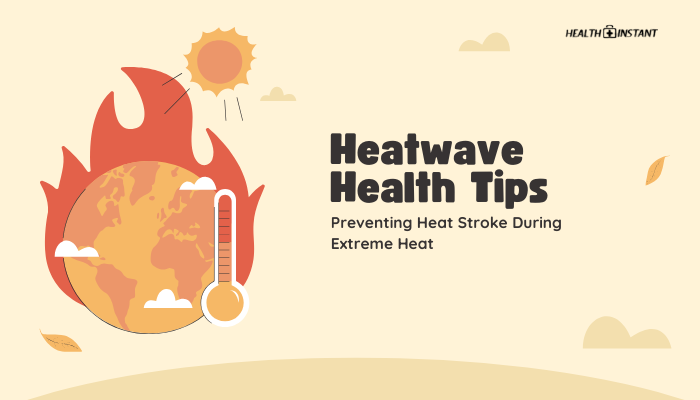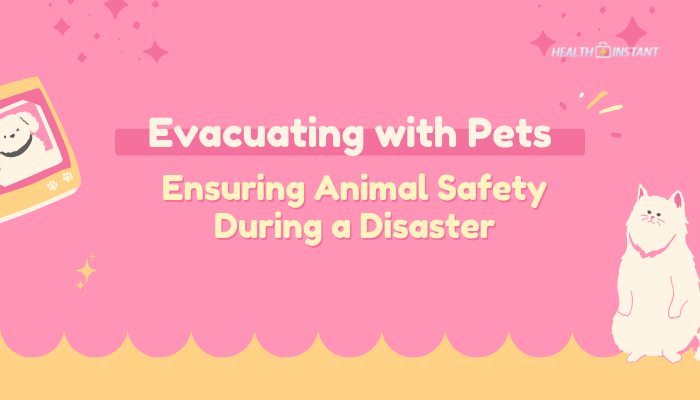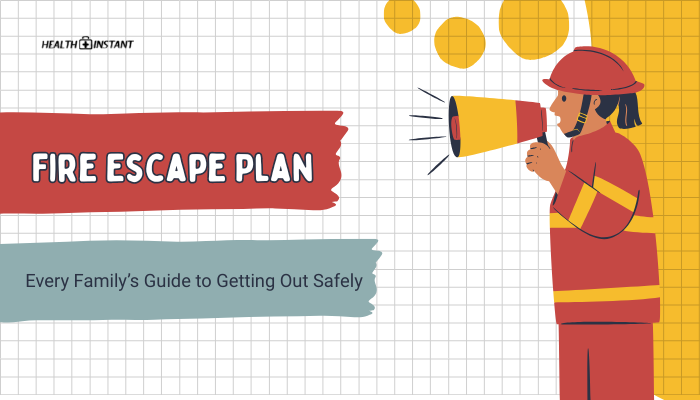Introduction
As climate change intensifies, heatwaves are hitting new temperature records and lasting longer than before. These extreme heat events pose significant health risks, with heat stroke being one of the most severe concerns. Even healthy adults can experience heat stroke if they fail to take precautions like staying hydrated, limiting strenuous activities in peak hours, and ensuring cooling solutions at home or work.
This guide offers insights into recognizing, preventing, and managing heat stroke during scorching weather. By focusing on hydration, appropriate clothing, indoor cooling methods, and early symptom detection, individuals and communities can minimize the dangers of extreme heat. Whether you live in a typically hot region or face an unexpected heatwave, these measures protect you and those around you from serious health impacts.
Why Heatwaves Are More Dangerous Now
- Rising Global Temperatures: Average temperatures increase, creating more frequent and intense heatwaves.
- Urban Heat Islands: Cities with concrete buildings and limited greenery trap heat overnight, making temperature spikes more prolonged.
- Climate Change Effects: Weather patterns shift, leading regions unaccustomed to extreme heat to face dangerous conditions.
- Inadequate Infrastructure: Older homes or areas without widespread air conditioning or reliable power may struggle to keep residents cool.
These factors amplify the frequency and intensity of heat episodes, making personal and community preparedness crucial.
What Is Heat Stroke?
Heat stroke is a severe, life-threatening condition that arises when the body’s temperature-regulating mechanisms fail. Core body temperature soars above 40°C (104°F), damaging organs and bodily systems. Common causes include:
- Prolonged Exposure to Direct Sun
- Intense Physical Activity in Hot Environments
- High Humidity Levels reducing sweat evaporation
Heat stroke demands immediate medical care to avert permanent organ damage or death.
Signs and Symptoms of Heat Stroke
- High Body Temperature: Above 40°C (104°F)
- Absence of Sweat: Skin may feel dry or flushed despite the heat
- Altered Mental State: Confusion, slurred speech, disorientation, or unconsciousness
- Rapid Breathing and Heart Rate: Tachycardia as the body struggles to cool down
- Seizures: In severe cases, convulsions may occur
Heat exhaustion can precede heat stroke, featuring heavy sweating, dizziness, and nausea. If someone stops sweating or shows neurological changes, suspect heat stroke and seek urgent medical help.
At-Risk Groups
Certain people are more susceptible:
- Infants and Young Children: Limited ability to regulate body temperature or express discomfort.
- Older Adults: Reduced thirst response and common chronic illnesses hamper heat responses.
- People with Chronic Conditions: Cardiovascular, pulmonary, or diabetes complications can worsen under heat stress.
- Outdoor Workers/Athletes: Prolonged sun exposure and exertion accelerate fluid loss and temperature elevation.
- Low-Income or Homeless Individuals: Lack of air conditioning or cool shelters raises vulnerability.
Recognizing these risk factors ensures more vigilant protective measures and monitoring.
Preventing Heat Stroke: Practical Measures
Hydration and Nutrition
- Drink Water Frequently: Don’t wait until you’re thirsty; regular sips help maintain body fluid levels.
- Avoid Excessive Sugary or Alcoholic Beverages: They can dehydrate you further.
- Consume Electrolytes: Sports drinks or coconut water replace salts lost in sweat, especially during heavy activity.
Clothing and Shade
- Lightweight, Loose-Fitting Clothes: Light colors reflect sunlight better, while breathable fabrics allow sweat to evaporate.
- Use Hats and Umbrellas: Provide shade for the face and neck; wide-brimmed hats are ideal.
- Sunglasses: Protect eyes from harmful UV rays.
Managing Indoor Temperatures
- Ventilation: Open windows in the cooler morning or evening hours; close curtains or blinds during peak heat.
- Air Conditioning: If possible, use AC or fans. For those without AC, visit public cooling centers—libraries, malls, or designated community shelters.
- DIY Cooling: Place a bowl of ice before a fan for a makeshift cooler or use cool towels around the neck.
Timing Activities Wisely
- Avoid Peak Afternoon Heat: Schedule outdoor tasks or exercise for early morning or late evening when temperatures are lower.
- Pace Yourself: If you must be outdoors, take frequent breaks in the shade or indoors.
Recognizing Early Warning Signs
- Heat Rash, Excessive Sweating, Muscle Cramps: Indicate the body’s struggle to cope.
- Dizziness, Fatigue, Nausea: Could signal heat exhaustion. Move to a cooler area, hydrate, and if symptoms worsen, seek medical help.
7. Emergency Response if Heat Stroke Occurs
If you suspect someone is experiencing heat stroke:
- Call Emergency Services: Immediate medical intervention is vital.
- Cool the Person Rapidly: Move them to a shaded or air-conditioned place, remove excess clothing, and apply ice packs or cool water to the skin.
- Elevate Feet Slightly: Helps circulation if the person is conscious.
- Monitor Breathing and Vital Signs: Be ready to perform CPR if they stop breathing.
- Do Not Give Fluids if Unconscious: Wait for professional assistance to manage fluid intake safely.
Timely action can save a life, minimizing organ damage from extreme body temperatures.
Community and Public Health Efforts
Communities can reduce heatwave casualties through:
- Public Cooling Centers: Offering air-conditioned spaces for vulnerable residents.
- Heatwave Alerts: Local agencies broadcast warnings, encouraging people to stay indoors, check on neighbors, and reduce daytime outings.
- Infrastructure Adaptation: Planting more trees for shade, creating reflective rooftops or roads, and improving building ventilation.
- Community Networks: Neighborhood check-ins for older adults or chronically ill individuals ensure they receive assistance.
Local governments can incorporate heatwave mitigation into disaster preparedness plans. Partnerships with NGOs, faith-based groups, and volunteer organizations often extend the reach of such measures.
Tips for Workplace and Outdoor Settings
- Adjust Work Schedules: If feasible, shift labor-intensive tasks to cooler periods.
- Mandatory Breaks: Encourage employees to rest in shaded or air-conditioned areas.
- Provide Hydration: Ensure water stations or electrolyte drinks are readily accessible.
- Buddy System: Workers look out for each other’s symptoms. Quick intervention can prevent escalation to heat stroke.
Outdoor recreational spots (e.g., sports fields, hiking trails) should display prominent heat advisories, and event organizers can time activities around cooler hours.
Conclusion
Heatwaves are a global reality in a warming climate, pushing the human body to its limits. Vigilant measures—such as staying hydrated, dressing appropriately, timing activities to avoid peak temperatures, and preparing emergency response plans—empower individuals and communities to cope with scorching conditions.
Meanwhile, public authorities must continue enhancing infrastructure, establishing effective warning systems, and offering safe public spaces during extreme heat events. By combining personal responsibility with communal support and policy-level coordination, we can keep heat stroke and related hazards at bay, ensuring a safer environment for all during the hottest days ahead.
References
- World Health Organization (WHO). (2018). Heatwaves: risks and responses.
- Centers for Disease Control and Prevention (CDC). (2020). Heat-related illnesses.
- Intergovernmental Panel on Climate Change (IPCC). (2021). Sixth Assessment Report.
- National Oceanic and Atmospheric Administration (NOAA). (2019). Heat index and heat safety.
- US Environmental Protection Agency (EPA). (2022). Excessive heat events guidebook.
Disclaimer: This article is for informational purposes only and does not replace professional medical advice. Always check local guidelines and consult healthcare professionals if you or someone else experiences severe heat-related symptoms.






